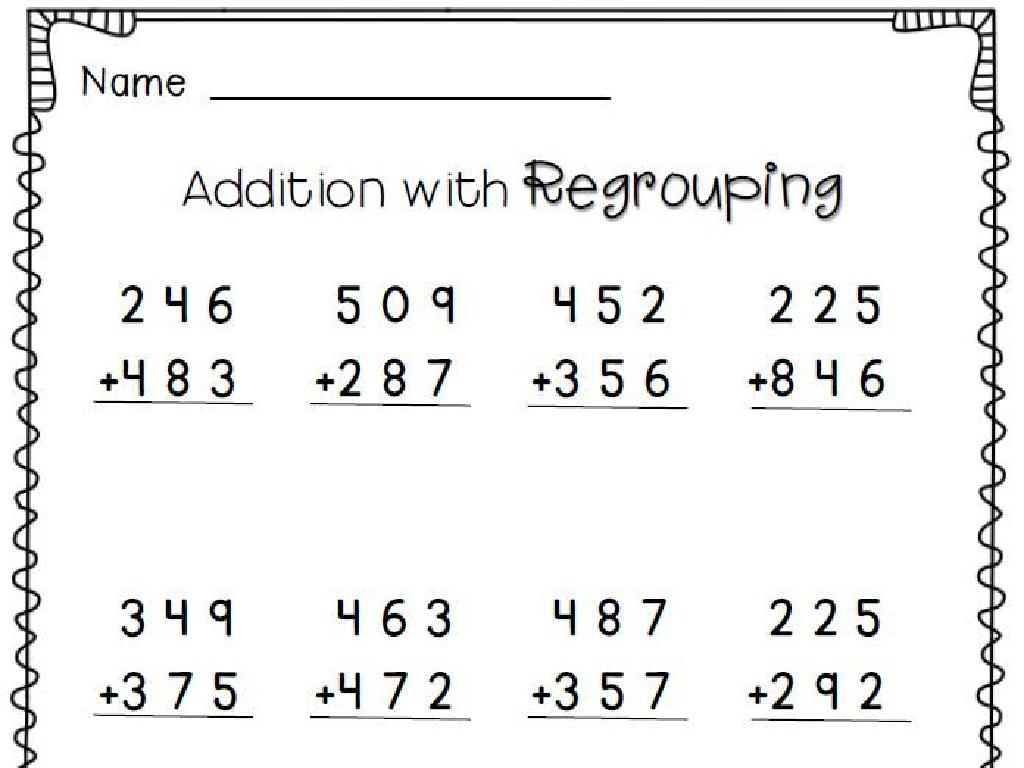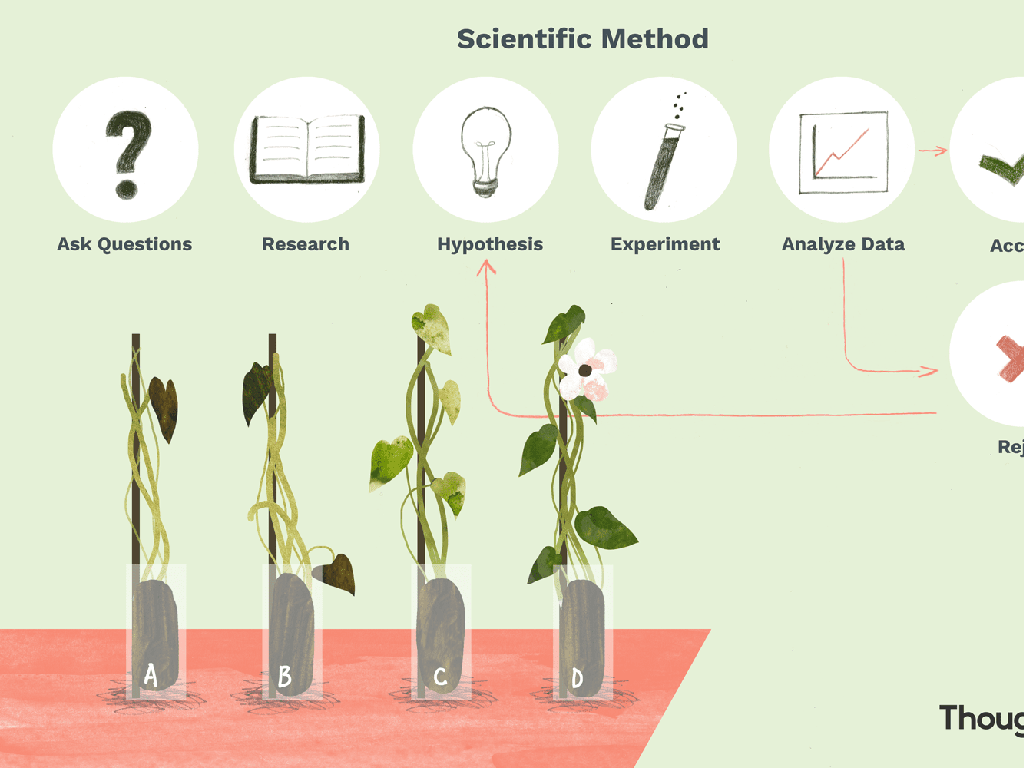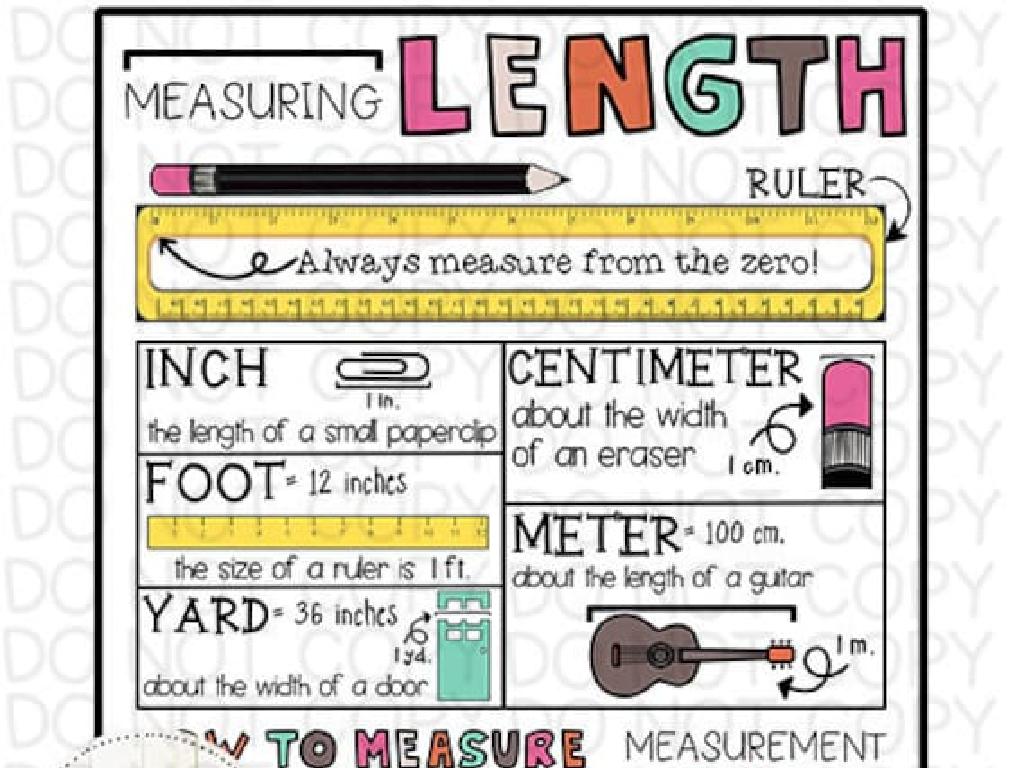Which Word Ends With The Same Sound?
Subject: Language arts
Grade: Pre-k
Topic: Beginning And Ending Sounds
Please LOG IN to download the presentation. Access is available to registered users only.
View More Content
Sound Detectives: Matching Sounds
– Listen to word sounds
– Learn beginning & ending sounds
– Find words with same ending sounds
– Like ‘cat’ and ‘hat’ end with ‘at’
– Be a sound detective!
– Use your ears to find words that sound the same at the end!
|
This slide introduces the concept of phonemic awareness by focusing on the sounds that words make, specifically the beginning and ending sounds. Encourage the children to listen carefully to the sounds that each word makes. Use examples to demonstrate how some words have the same ending sounds. Engage the children in a fun activity where they become ‘sound detectives’ and look for words that end with the same sounds. This could involve listening to words you say out loud or identifying them in a story. Make sure to praise their efforts as they make connections between sounds and words.
Learning About Sounds in Words
– Understanding word sounds
– Sounds are what we hear with our ears when we talk or listen.
– Words have starting and ending sounds
– Every word has a sound at the beginning and one at the end, like ‘cat’ starts with ‘c’ and ends with ‘t’.
– Listening to word sounds
– We use our ears to hear the ‘s’ at the start of ‘sun’ and the ‘n’ sound at the end.
|
This slide introduces the concept of sounds in words to Pre-k students. It’s important to explain that sounds are what we hear when someone speaks or when we say words ourselves. Emphasize that every word has a sound at the beginning and a sound at the end, and we can hear these sounds by listening carefully. Use simple and familiar words as examples to illustrate starting and ending sounds. Encourage the children to practice making sounds and to listen to the sounds they and their classmates make. This will help them become aware of the sounds that make up words, which is a fundamental skill in learning to read and write.
Learning Beginning Sounds
– Beginning sounds are special
– It’s the very first sound we hear in a word
– ‘Cat’ starts with the ‘c’ sound
– Like ‘c’ in ‘cat’, ‘b’ in ‘bat’, and ‘d’ in ‘dog’
– Practice finding first sounds
– We’ll try this with different words
– Let’s start with easy words
|
This slide introduces the concept of beginning sounds to Pre-K students, emphasizing the importance of the first sound in a word. Use examples that are familiar to the children, such as ‘cat’, ‘bat’, and ‘dog’, to illustrate the concept. Engage the class in a fun activity where they practice identifying the first sound of various words. Start with simple, one-syllable words to ensure that the children can easily recognize the sounds. Encourage them to repeat the sounds out loud and praise their efforts to build confidence. This activity lays the foundation for phonemic awareness, which is crucial for their reading development.
Matching Ending Sounds
– Ending sounds in words
– ‘Dog’ ends with ‘g’ sound
– Like ‘dog’, ‘log’ and ‘frog’ also end with a ‘g’
– Find words with ‘g’ ending
– Look for words around you or in books that sound like ‘dog’
– Share your words with the class
|
This slide introduces the concept of ending sounds to Pre-K students. Start by explaining that the ending sound is the last sound we hear in a word. Use the word ‘dog’ as a clear example and pronounce the ending ‘g’ sound distinctly. Encourage the children to think of other words that end with the same sound and provide guidance if needed. Possible words include ‘log’, ‘frog’, ‘bug’, etc. Make this an interactive session by allowing the children to share their words with the class, reinforcing their understanding of ending sounds through repetition and peer learning.
Matching Ending Sounds
– Words with matching sounds
– Listen and find same endings
– For example, ‘cat’ and ‘hat’ both end with the ‘at’ sound.
– Say words aloud together
– Use ears to hear sounds
– Focus on the last sound each word makes.
|
This slide introduces the concept of rhyming to Pre-K students by focusing on words that have the same ending sound. Start by explaining that some words sound similar at the end and this is what makes them rhyme. Engage the students by listening to words together and identifying those that end the same way. Practice saying words out loud as a group to emphasize the ending sounds. Use simple, familiar words to ensure understanding. Encourage the children to listen carefully and repeat the sounds they hear. This activity will help develop their phonemic awareness, which is crucial for early reading skills. Make the activity fun and interactive to keep the students engaged.
Practice Time: Ending Sounds Game
– Listen to the word I say
– Find a picture with the same ending sound
– Example: ‘bat’ ends with ‘t’
– If I say ‘bat’, look for a picture ending in ‘t’ like ‘cat’
– Get ready for a fun matching game!
|
This slide is for an interactive class activity designed to help Pre-k students recognize and match ending sounds. The teacher will say a word out loud, and the students will choose a picture from a selection that ends with the same sound. For example, if the teacher says ‘bat’, the students should look for a picture of a ‘cat’ or ‘hat’. This activity will reinforce their understanding of phonics by associating sounds with visual representations. The teacher should prepare a set of pictures that have clear ending sounds and be ready to assist students who may struggle with the activity. Encourage the students to say the words out loud as they make their selections to further reinforce the learning objective.
Let’s Review: Beginning and Ending Sounds
– Beginning sounds start words
– Ending sounds finish words
– Words can end with same sounds
– ‘hat’ and ‘cat’ both end with ‘at’
– Examples: ‘hat’ and ‘cat’
|
This slide is aimed at reinforcing the concept of beginning and ending sounds in words for Pre-k students. Beginning sounds are the first sounds we hear when we say a word, while ending sounds are the last. It’s crucial to emphasize the similarity in ending sounds with familiar examples. Use words that are easy for the children to understand and visualize, such as ‘hat’ and ‘cat’, which both end with the ‘at’ sound. Encourage the students to practice by finding objects in the classroom that end with the same sounds or by thinking of other words that rhyme with ‘hat’ and ‘cat’.
Sound Bingo: Ending Sounds
– Play Sound Bingo together
– Listen for the ending sounds
– When I say ‘cat’, find a picture that ends with ‘at’
– Match sounds to pictures
– Does ‘dog’ end like ‘log’? Put a chip on it if it does!
– Win stickers for three in a row
|
This interactive class activity is designed to help Pre-k students recognize and match ending sounds, which is a fundamental skill in phonemic awareness. Provide each student with a bingo card that has pictures instead of numbers. Call out words and have the students place a marker on the picture that ends with the same sound as the word you said. This game will help students listen carefully to sounds and make connections between spoken and written language. Possible variations of the game could include using different sets of ending sounds, playing in small groups, or having students take turns calling out the words. Remember to praise their efforts and reward the winners with stickers to keep the activity engaging and fun.





